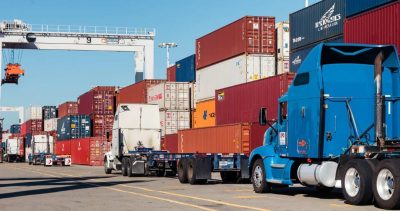As the demand of shipping remains uncertain, shippers are doing their best to interlude their agreements to order in hopes to try and eliminate any additional expenses as their cost are ranking higher today then they were prior to the Covid 19 pandemic. With shipping rates in the United States finally beginning to decrease, the expensive and costly freight contracts are now being forced to reconsult such shipping contracts that had been issued at the time when there was a sudden increase in demand for freight amid the pandemic of Covid-19. With the new reduced rates vastly approaching, shippers, suppliers and manufactures have something to look forward to as the inflation is finally beginning to go down. While many shippers are still paying higher fees then they were pre-pandemic supply chains across the county have experienced the same issue and are hopeful that they can finally expect the rates to begin to go down slowly. This decrease in rates is in thanks to a shrink in demand as lower rates are now holding the prime spots in various markets that can help to reduce long term contracts. At the beginning of 2022, many shippers were paying increasingly high rates for their contracts in order to secure their freight on air and ocean transportation as a method to stay ahead of seasonal shipping seasons in order to avoid potential delays and shortages in inventory they began to experience during 2021. It is said that ocean contracts have been reduced between 15% – 20%, while ocean rates are already steadily decreasing there is opportunity for rates to decrease even more throughout the remainder of the year. Finally, things have begun to work in favor of the specific importers as short-term rates have gone down from March- June of 2022, with the rates currently ranking lower than long-term rates. However, it appears that these shippers are willing to pay a higher contract rate above their spot price to secure their freight onto the ship or plane. There is a fine line between being willing to pay extra to guarantee the container on the ship and not letting shippers overpay for the basics. On the other hand, the trucking industry is noticing a decrease in truck rates as many are transitioning to long- term contracts as it allows for more stability for the professional truck drivers while completing the routes. While most contracts are decided based on the kind of equipment as well as the cost per mile, until diesel prices begin to go down as well, shippers will not benefit. While rates are going down, they are still affected by the surcharges of fuel to the carriers. Today’s rates are still high when compared next to pre-pandemic levels. While comparing the rate to ship container from the West Coast to China, it was discovered to be 4x higher in the same quarter of July 2019. Looking at the rates over the last few years, the cost has gone down almost $21,000 since 2021 but is still almost three times higher than the rates prior to the pandemic. In order to get to less than $10,000, where rates were prior to the pandemic we want to remain in that ratio to remain competitive. Being that the freight rates in the United States increased to almost 30% in the past few years, it has reduced from July -August by 2% this illustrates that we have reached the height of potential freight rates right as peak shipping season begins. As we approach peak shipping season, more trucks have free capacity. Looking at the change in freight rates across 2022, it is evident that February had the highest rates of the year with 37% while both June and July were only 28% almost a 10% decrease in rates. Reviewing the discovered data, over the year delivered freight increased by 0.4% but declined almost 2% from a month-to-month review. The market balance shifted as it is based on a perspective of demand. To maintain the current levels of peak season a surplus of new drivers would be needed to maintain existing levels of supply and demand. With U.S truck prices evolving into a barrier to entry, it will become a big factor in terms of capacity. Ultimately, with freight rates decreasing it provides an opportunity for different 3PL to outperform their competitors by considering the needs of the upcoming peak season and by onboarding more drivers to exceed the level of freight to be moved and to ensure that the demand perspective is taken into consideration while considering the existing growth of the supply of the freight.

REDUCING RATES IN SUPPLY CHAIN
||

